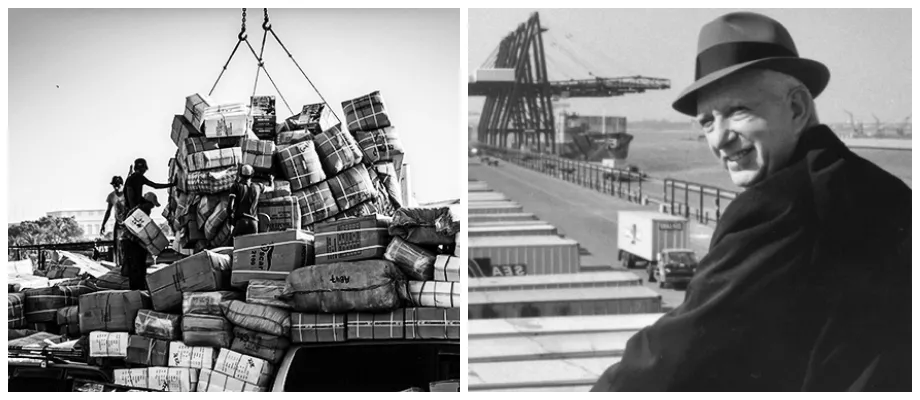History of containers
Cargo transportation is inextricably connected to the use of comfortable, durable and universal containers. The use of steel modules significantly simplifies the process of transporting various loads at any distance. Loads can be moved by any suitable vehicle without repacking. They are transported safely, fast and inexpensively.
But that was not always so. Up to 1956 the world did not know about the existence of containers.
Who invented containers?
The inventor of containers is an enterprising American businessman Malcolm McLean. As an owner of a huge transportation company, he wanted to solve a problem of fast and cheap load shipment. An engineer considered several former unsuccessful projects and managed to create a construction that is today known all over the world.
Importantly, McLean was able to design a universal scheme of shipping steel boxes by marine, railway vehicles as well as automobiles without the overload of their content. Multi-modality significantly sped up the transportation process and reduced costs.
Some historians claim that there was a similar project called “Behälter”, managed by the German army during World War II. But the invention didn’t get much popularity and was forgotten for many years.

Active development
The increase of container shipment relates to another war. The American army, having combat operations in Vietnam, contributed to the popularity of the innovation. Supplying the army in some distant regions of Asia was a huge problem. Thus, Malcolm McLean introduced the aforementioned solution. Modules were used to transport the first batch of weapons, which helped to reduce the carriage time by 5 and costs by 6.
The batch of 226 containers was delivered from door to door rapidly and cheap. Actually since then the term “door to door” got in use of companies occupied in transportation services all over the world.
Today companies offer a great range of shipping containers for solid, liquid, bulk and gas cargo. The market constantly develops, so register on the platform to stay up to date.